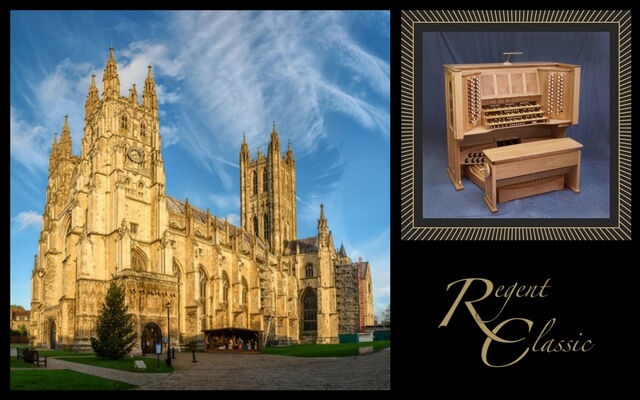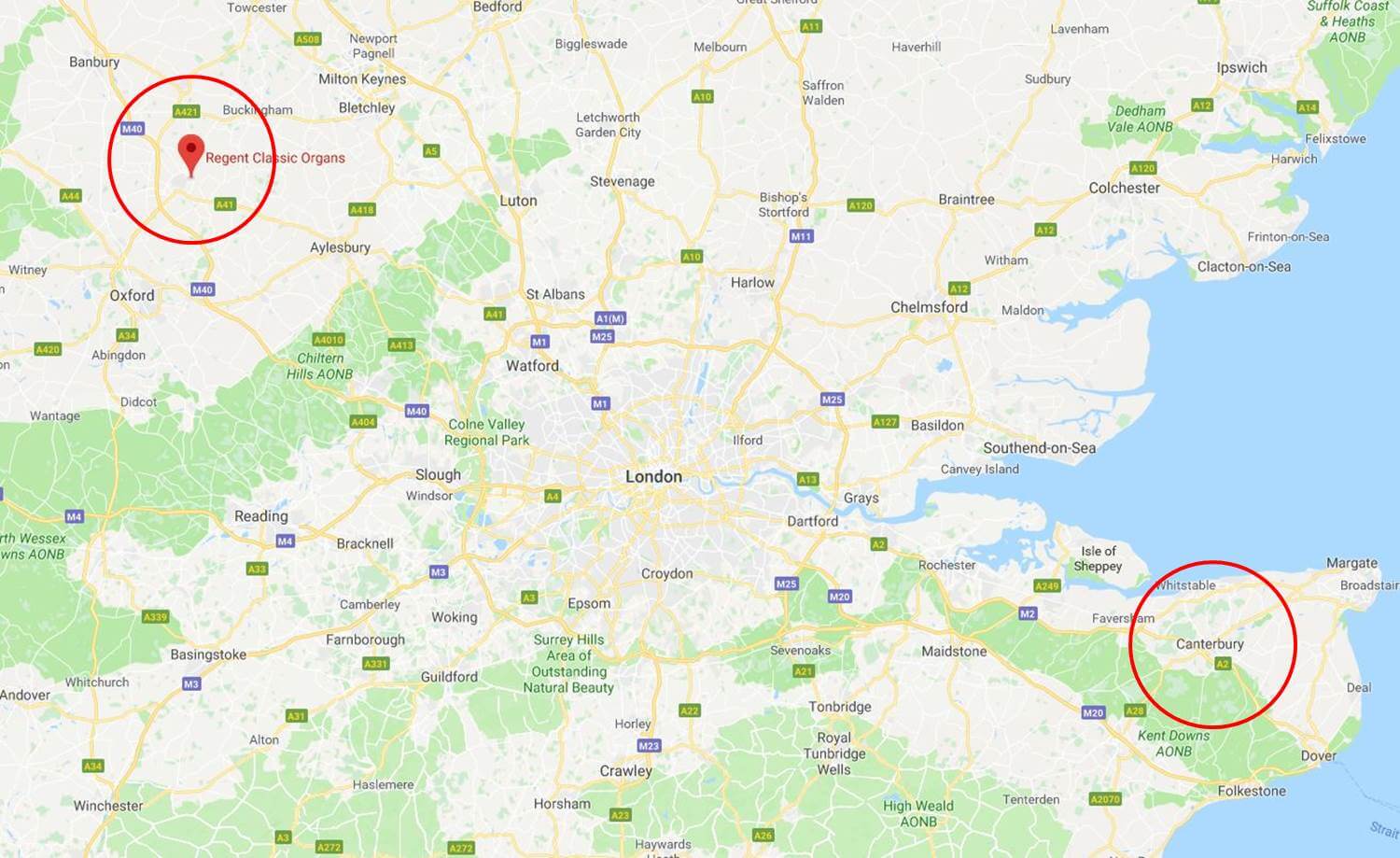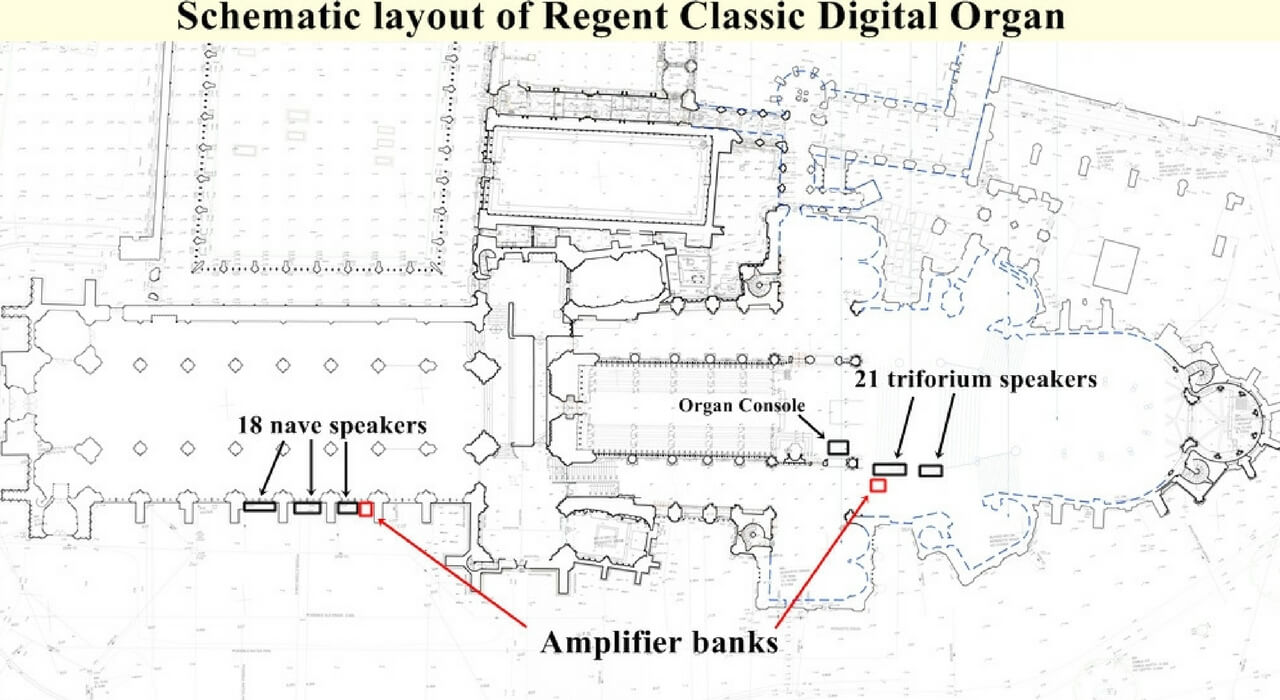In early 2017, we visited Dr David Flood, Organist & Director of Music at Canterbury Cathedral to discuss the provision of a temporary Digital Organ to help provide cover while the Pipe Organ was being rebuilt by Harrison & Harrison. We suggest you visit the Canterbury Cathedral website to find out more about the Cathedral Organ Project – where you can also support the project by “Adopting a Stop!”.
Almost a year to the day, we set off to install our organ at the Cathedral, 140 miles south east of our showroom in Bicester. This is the first of two blog posts sharing our experience on this amazing project with you.
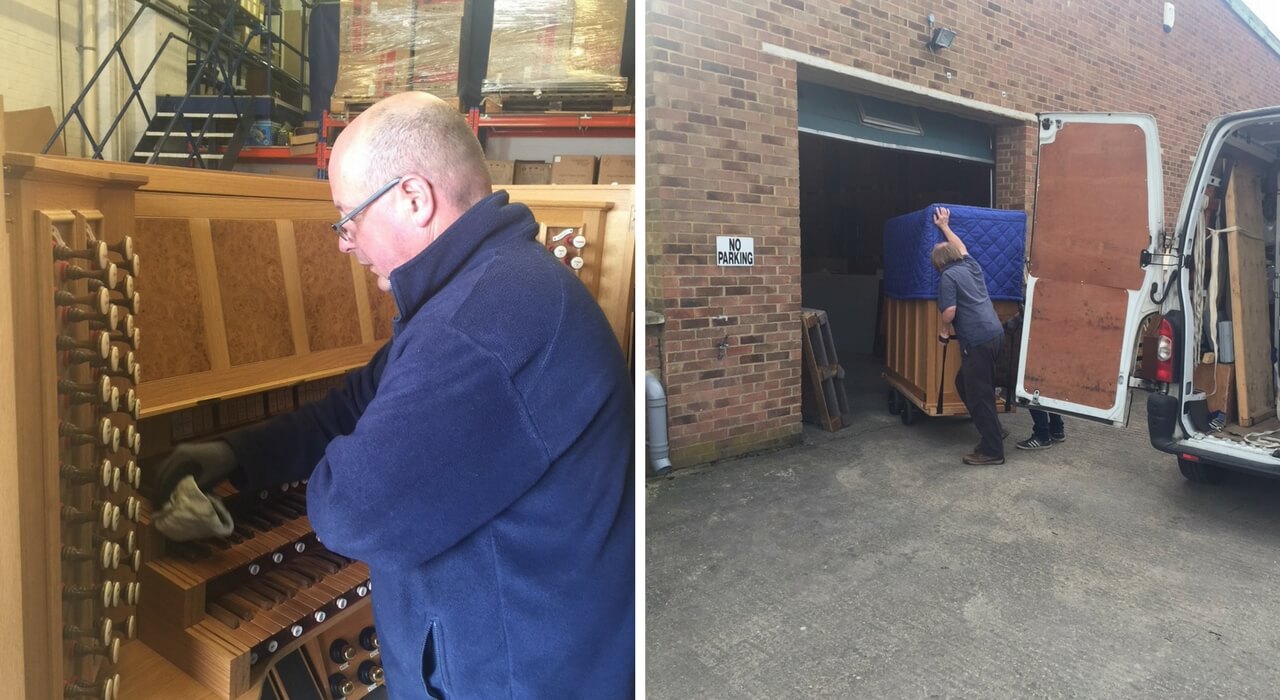
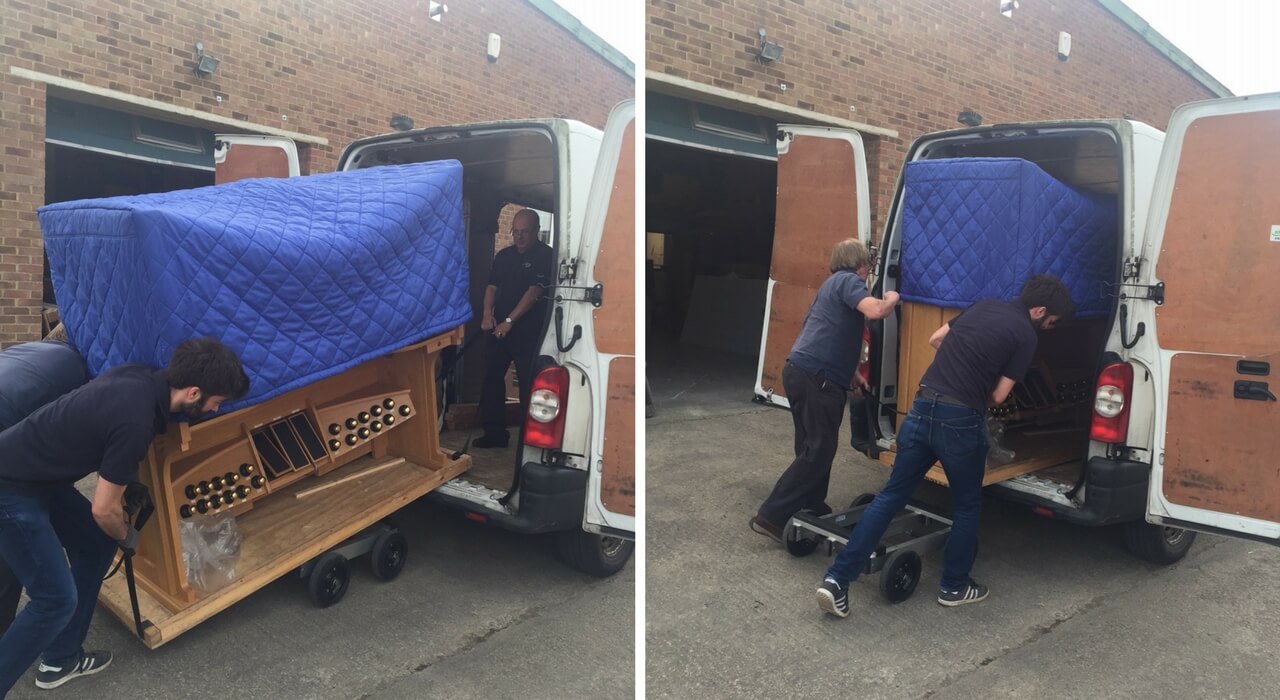
These are my musings from Day 1 of this project…
The initial installation plan
As with many large installation projects – the ‘fun’ really starts when you need to take all that you have planned, designed and measured beforehand, and put it into place at the client’s venue.
When we first talked about the installation back in 2017, the plan was:
To have a large speaker set up in the South East Triforium space and link the Nave pipe organ into the digital console. That presented some significant technical challenges as the distance from our console to the ‘splice point’ into the Nave organ wiring was of the order of 40 metres. Well beyond the distance limit that it is safe to rely on midi data transmission.

There was also a requirement to provide a single Manual console in the Nave to play the pipe organ alone which required another splice point at the Nave pipe case.
All this was possible but would need the use of Cat 5 cable technology to transmit the data over the distance and then a midi decoder to turn the digital console output into data that the pipe organ would understand. This still left the problem of turning on the blower, which was done by a relay switch in the organ loft.
A revised organ installation plan
Thankfully…this initial plan was revisited…the plan amended.
A much simpler and more interesting option was chosen which entailed the complete duplication of the Triforium speaker set up on the Nave South aisle windowsill so allowing for the sound of a full size instrument to be heard speaking directly in the Nave (for the very first time!). Switches at the console allow each set of speakers to be independently activated. Great!
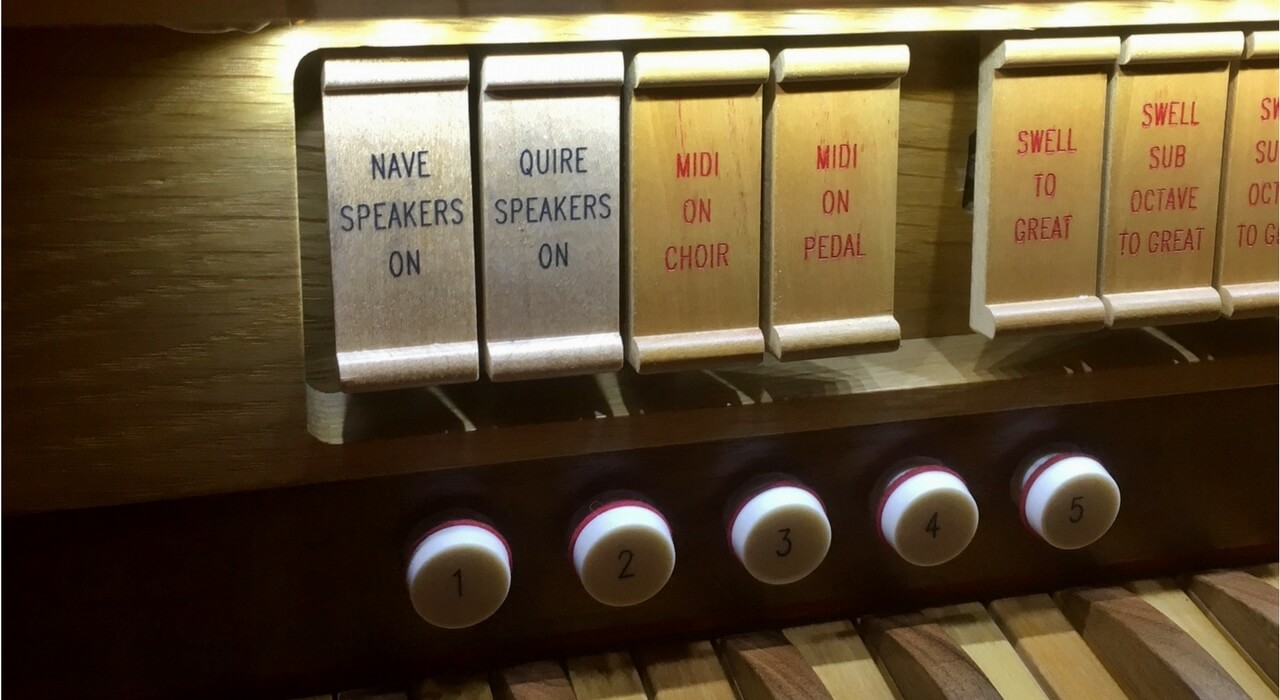
A further requirement was to generate sound more directly close to the choir so small monitor speakers carrying the complete organ were provided on the Eastry screen on the North and South sides of the Quire (Choir) some 3 meters (10 feet) above the choir stalls.
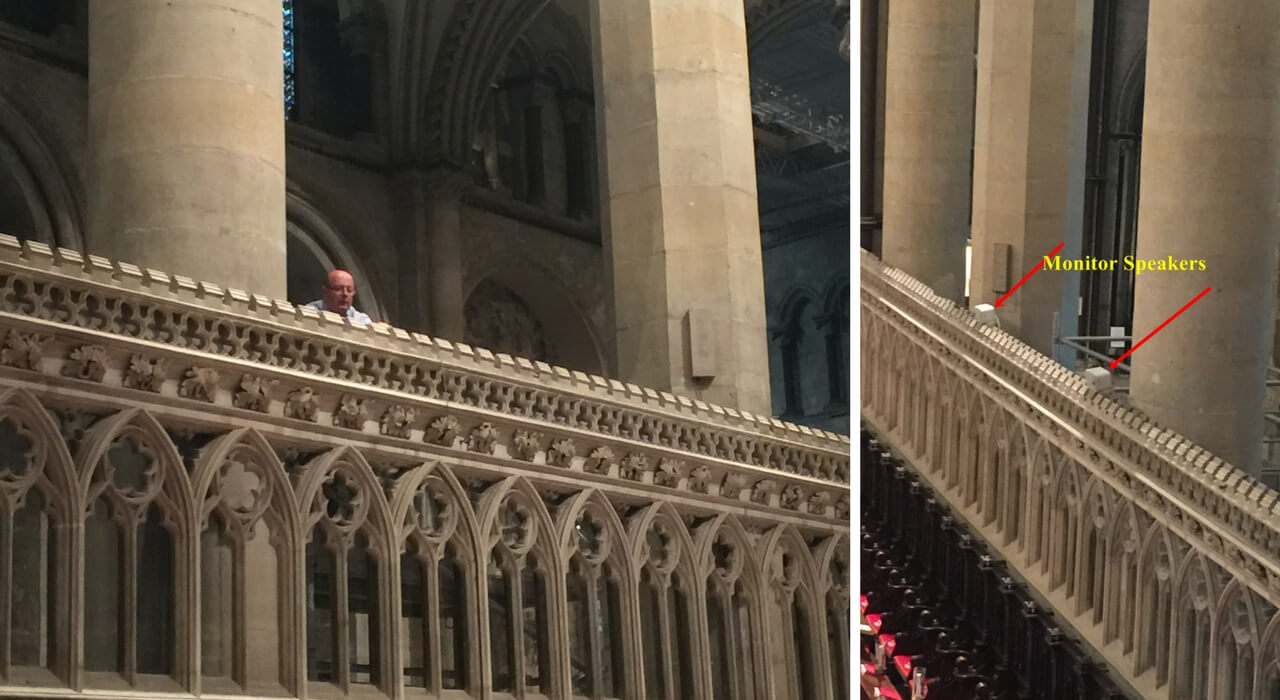
Monitor speakers were also placed in the organ loft behind the Pulpitum screen – speaking through the West side screen openings above the area where the choir sometimes sings below.
Canterbury Cathedral poses a challenge for sound
If you have never visited the Cathedral it is difficult to convey the vast scale of the building: one of almost two halves, split in two by the Pulpitum screen (solid stone) where there is also a level change of about 4 meters in height.

Sound does not easily penetrate this division, which has been a problem for the organists here for years. Indeed the last pipe organ rebuild tried unsuccessfully to overcome the problem by moving all the powerful pipework as far West as possible in the Triforium above the clergy stalls.
This made little difference to the sound levels in the Nave but I understand greatly upset the clergy below who are deafened when the full organ is used. The new pipe organ (once rebuilt) will utilise both North and South Triforium spaces and no doubt take account of the issues of sound levels at Quire floor level, especially close to the clergy stalls.
A new organ loft will also be constructed on the North side of the Quire some 10 metres east of the central loft in use today – so allowing the organist far better direct hearing of the organ above and the choir below him.
World Heritage Site regulations to heed
As Canterbury Cathedral is a World Heritage Site and Grade I listed, it is without doubt so far in our experience, the most demanding environment in which to undertake any form of technical work.
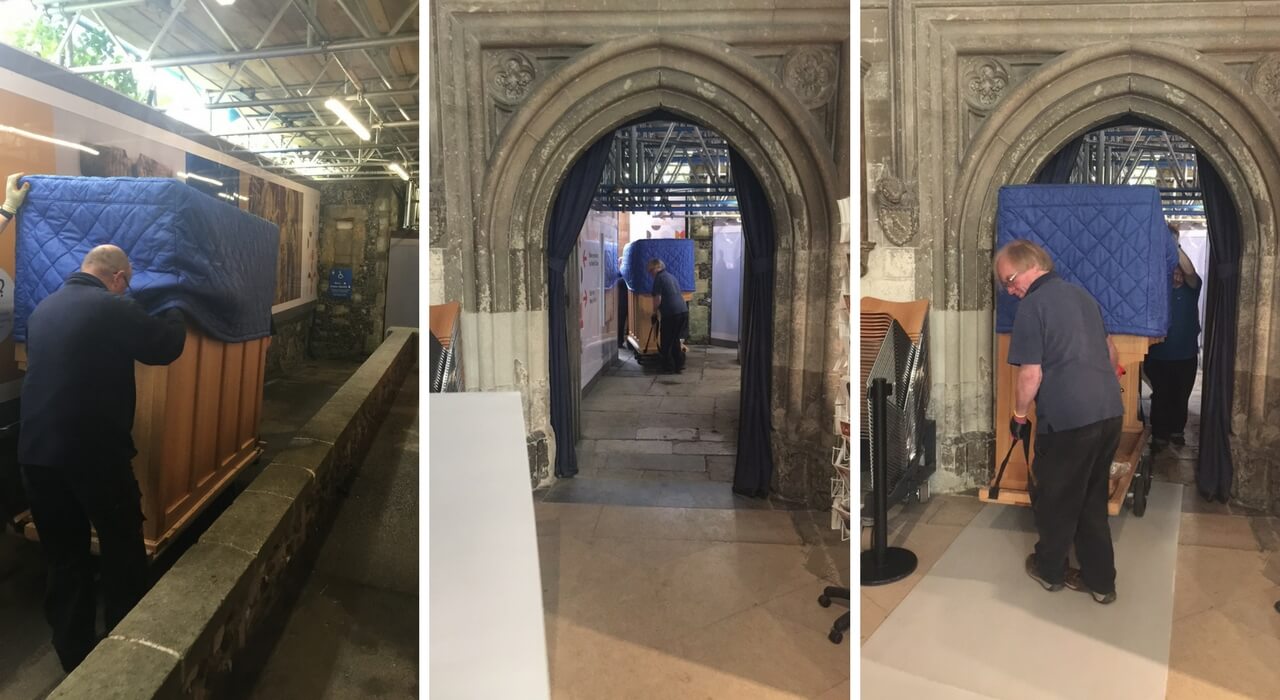
Thankfully the job of managing getting all the right permissions was happily not ours to undertake. William McVicker, who is also the consultant assisting with the pipe organ rebuild, supported the process of gaining all the appropriate permissions. We were required to send samples of the speakers that would be visible within the Cathedral for trial and approval. These were placed in position and received a final sign off towards the end of 2017.
And then…we had to think about how we engineer getting the instrument into place. Our challenge was to carry the rather large and heavy console (about 300Kg) up the steps that take you from the Nave level to the Quire. Such is the ancient value and fragility of these steps that it is not allowed for anything save feet to make contact with the floor to reduce the risk of stone fragments being broken off.

Yes that’s right – we had to formulate a magical plan to get the console to the upper level with only our feet. Bear in mind that there are no external doors available to give direct access (large enough) to hoist the console from the outside of the building.
Getting the Regent Classic Organ in place
Our solution involved placing the organ console on its side and stripping out as much weight as possible. Six people then carried the instrument up two flights of stairs to a landing area where it was returned to the upright position.
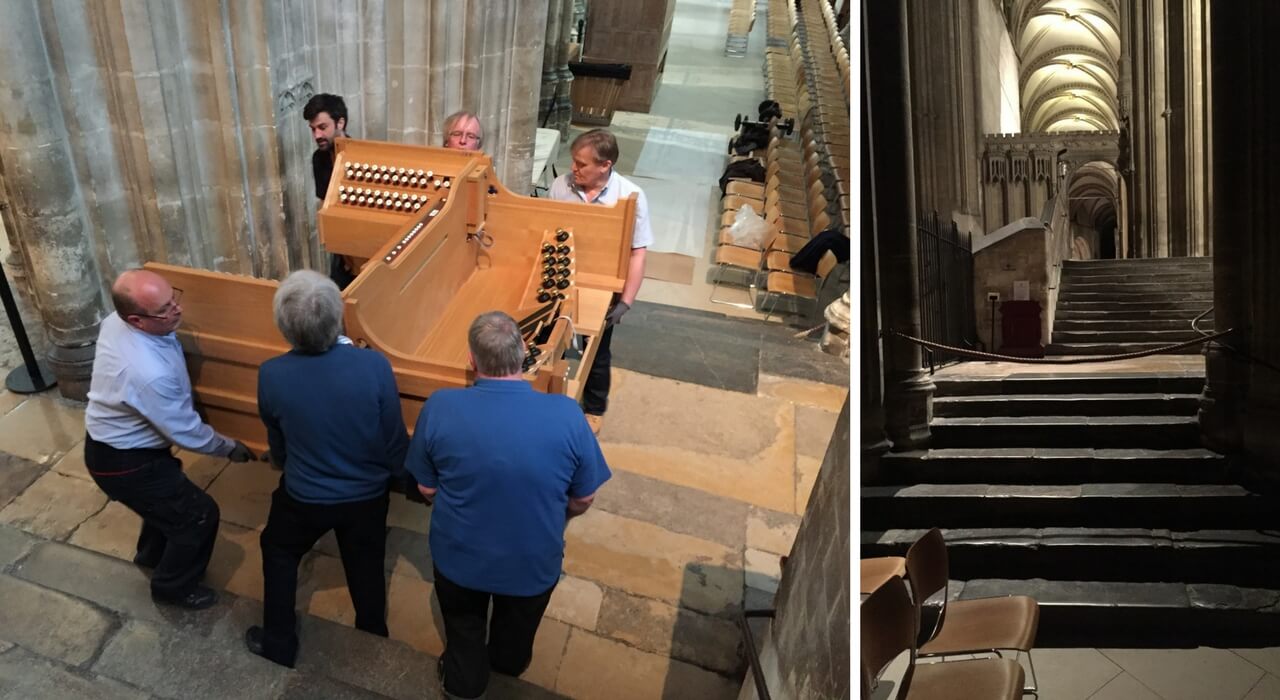
From there, (a distance of about 15 metres through an archway not wide enough to travel on its side), just four people carried it (without touching the steps) to a place where at last we could resume the normal method of transport on a wheeled bogey.
With around 1 million annual visitors to Canterbury every year – we also had to take into account that all this had to wait until the visitor traffic was low enough to allow the north side of the Cathedral to be closed off to the public for the 30 or so minutes it took to get up the steps.
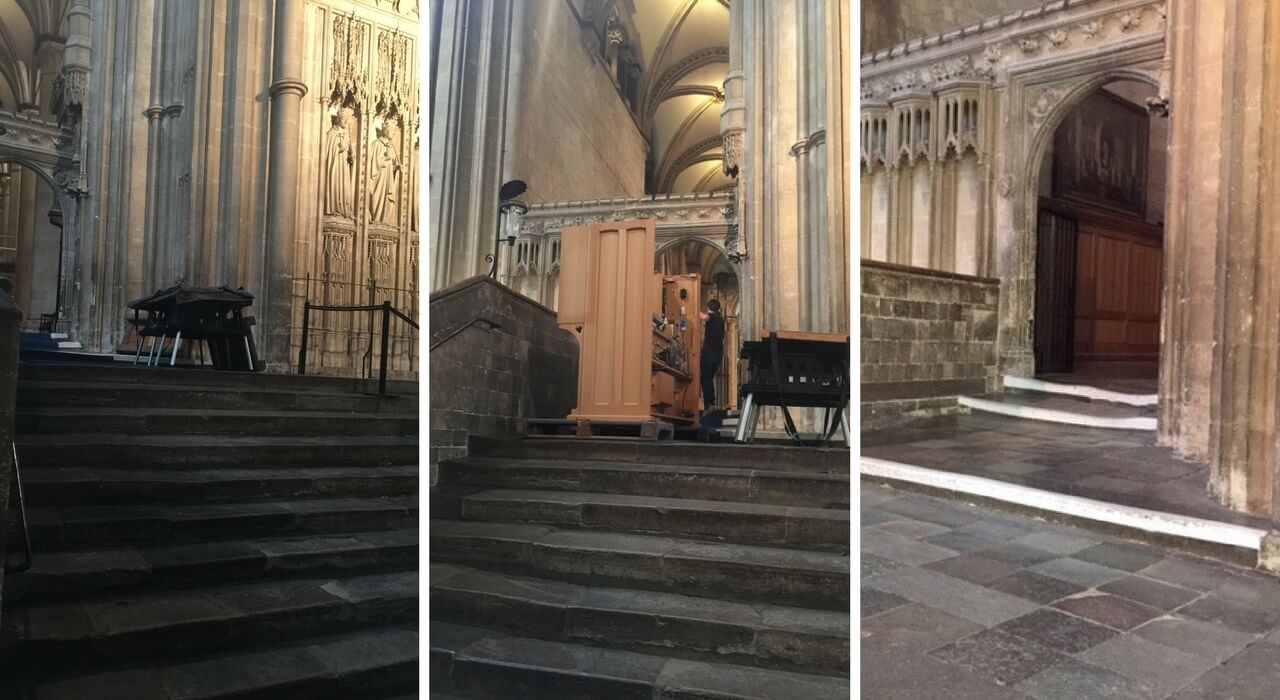
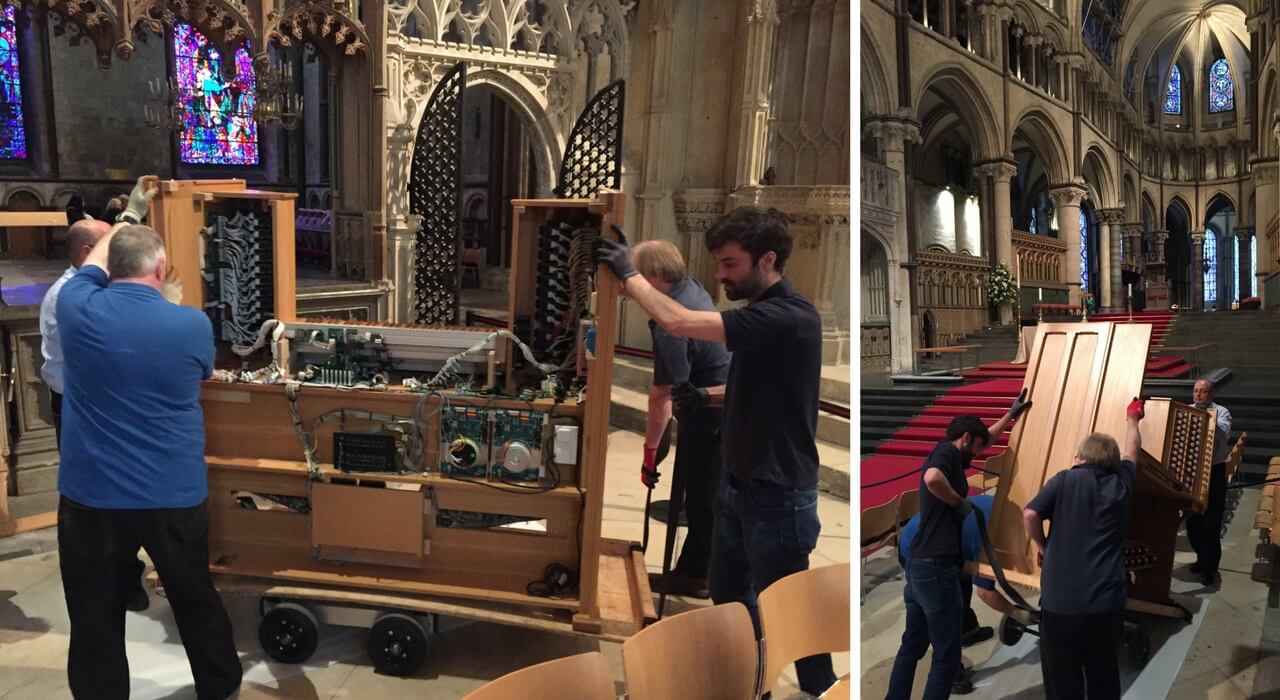
A number of firsts for us that day
- The first time the organ was on its side
- The first time we needed six people to move an instrument
- The first time we could not place it on the floor for any part of the travel.
It was hard work going up the steps and we now have two years to wait (and gather our muster) before we need to contemplate the return trip down the steps – which I expect will be harder.
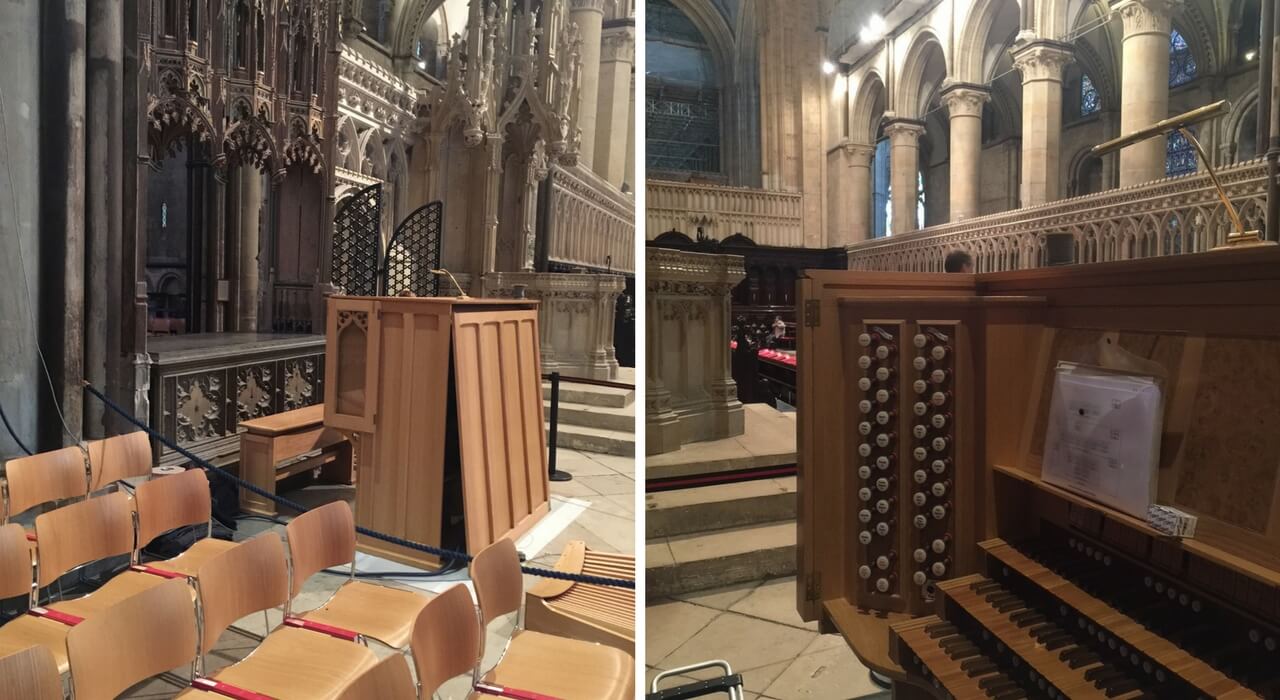
And what about our equipment?
Remember – all of the above was to just get the console in!
The vast majority of our other equipment had been delivered weeks ahead and already moved up to the Triforium by the Cathedral scaffolders. It was waiting for us in the north triforium space so we had a walk of about 100 metres to the East end and back for the 21 speaker cabinets and 5 substantial amplifiers.
By the end of day one, my phone’s fitness App recorded that I had climbed 42 flights of stairs and for a good part of the day the phone was on charge in the Quire (and not with me). So the reality is I climbed a good many more!
Speaker Installation and placement
By 10.30 pm of our first day of the install, we had all speakers in place and the console connected to the amplifiers. We were ready to switch on but even with the best amount of planning, there is, as always the unexpected hitches! Much to our dismay, we could only get two amplifiers to power up. That is a sign that it was time to call it a day.
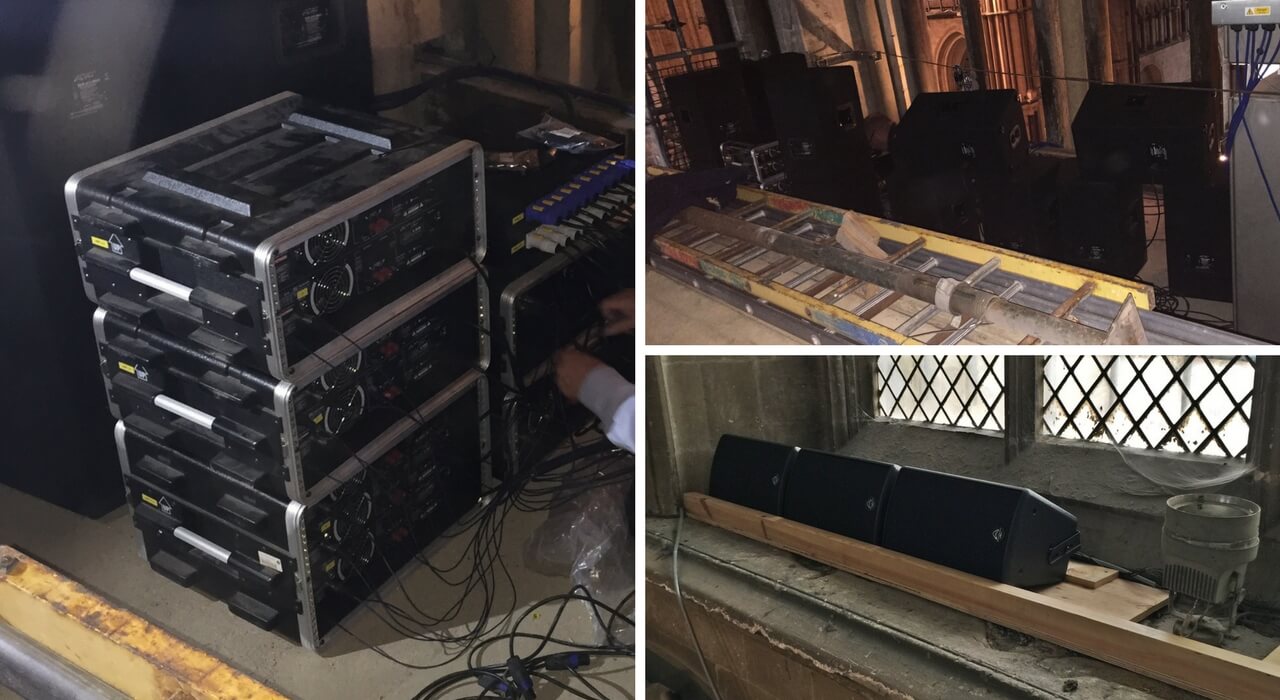
We would have to wait to the next day to fully ‘switch on’ and have the great joy of hearing our instrument play properly through the building.
A chance to hear the Canterbury Pipe Organ
Even though we couldn’t have the joy of hearing our instrument’s first sound after all that work, we were very content to enjoy a demonstration of the pipe organ by Matthew Nichols. Matthew is regular assistant living in Canterbury and Organ Scholar at Llandaff Cathedral (when at University in Cardiff).
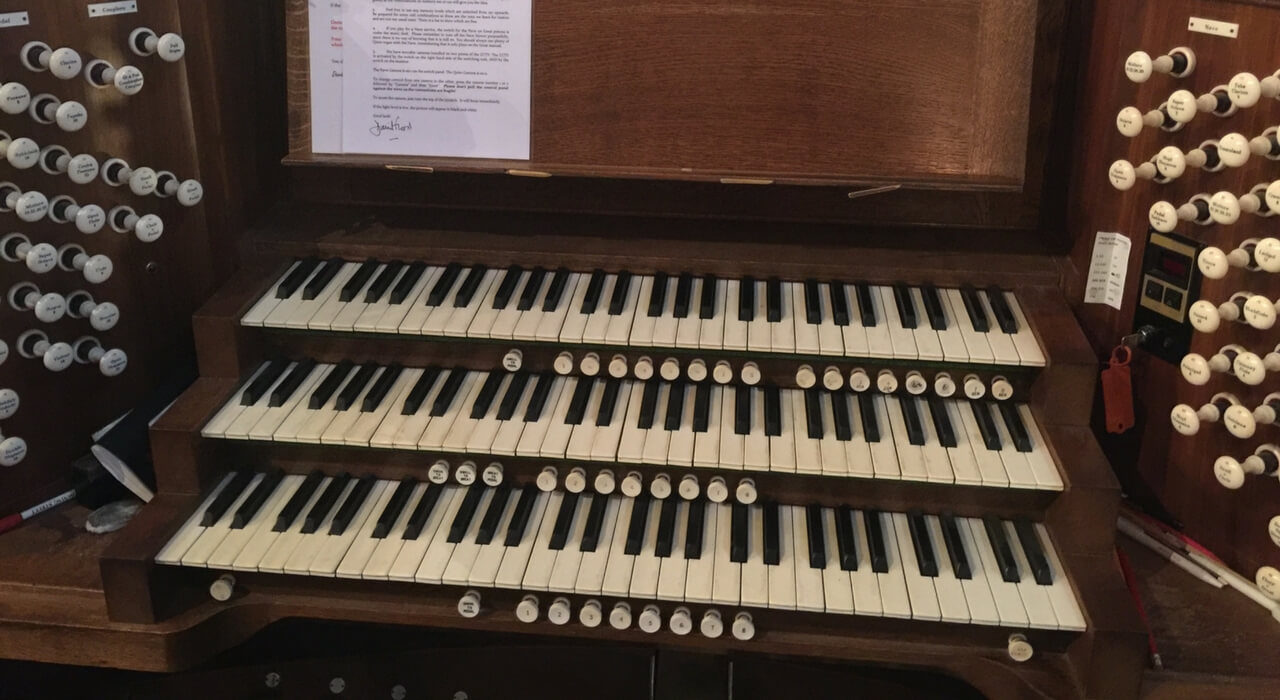
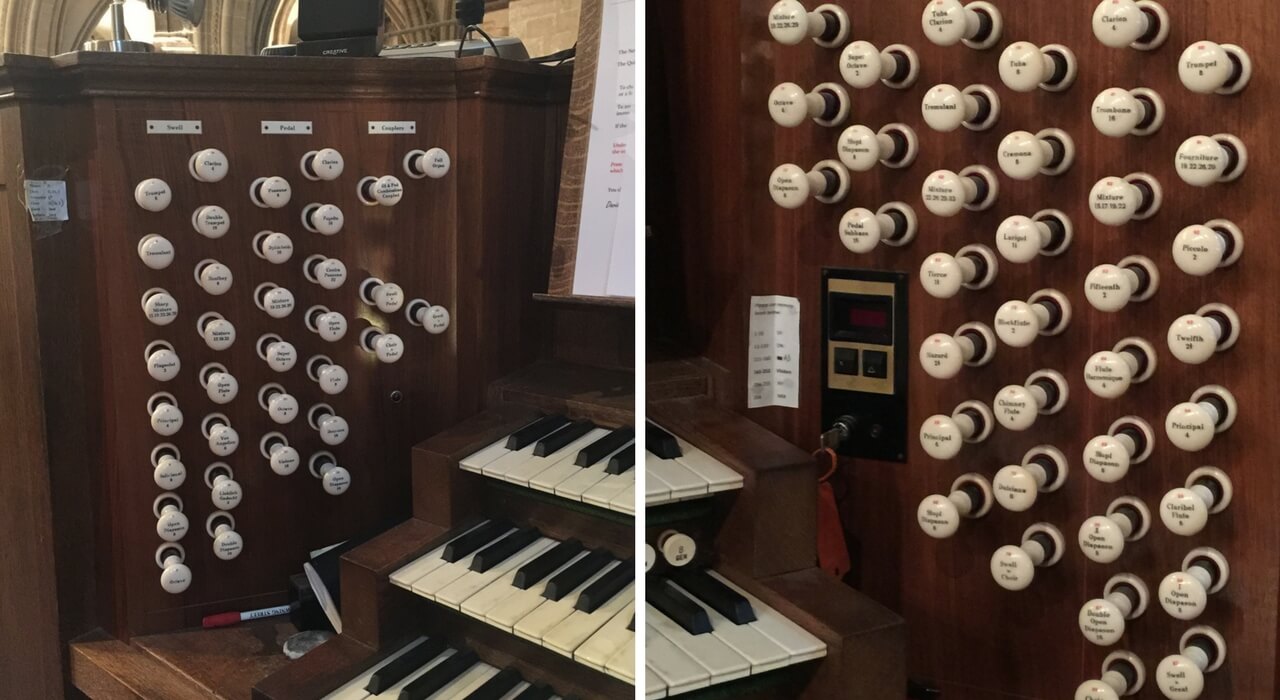
Hearing the pipe organ at full stretch gave us a sense of the sound levels we would need to reach to provide a credible match. That would be day 2’s challenge!
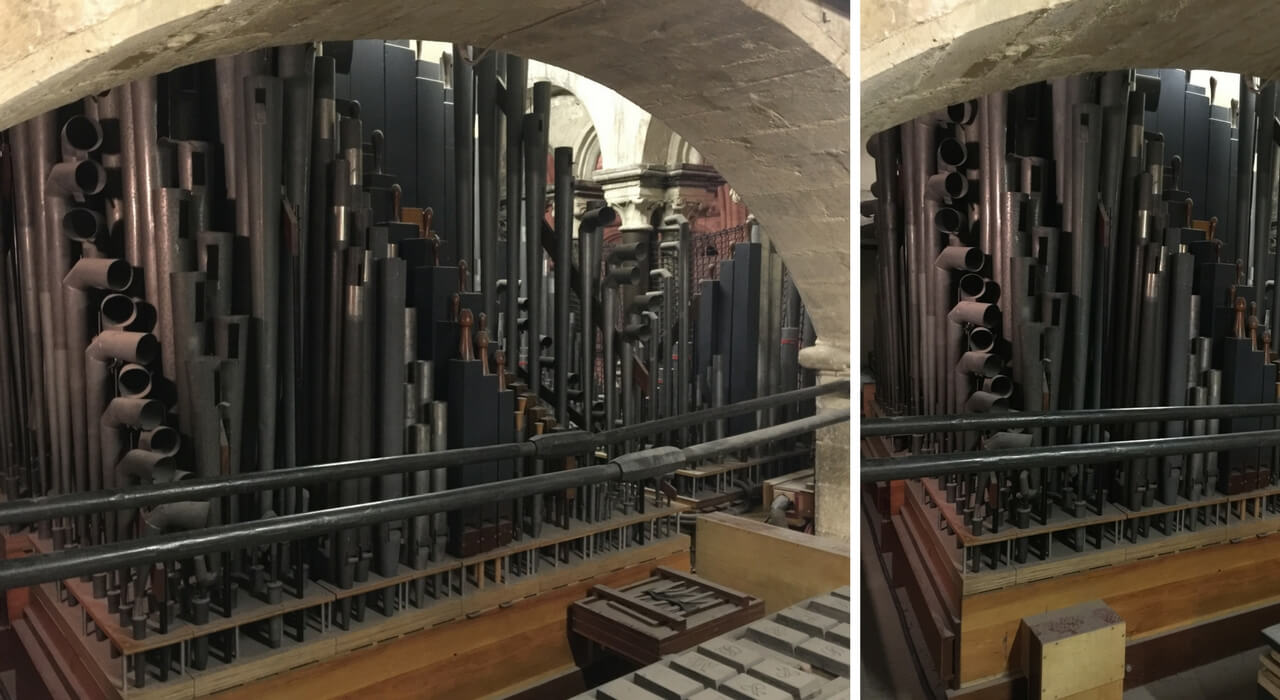
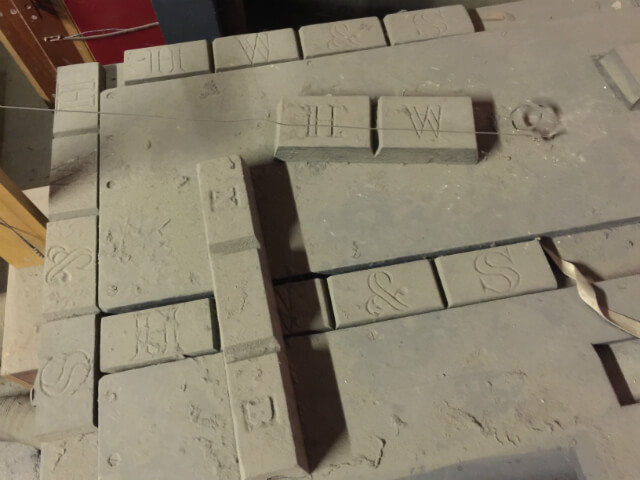
As always with digital instruments, it is the bass end of the sound spectrum we are most anxious of doing well. The pipe organ most certainly had a great bass presence even though as most people know the 32 foot pipes were long since removed in the last rebuild (why, I wonder?). For most of us deprived of a 32 foot anything in our day-to-day instruments, it is the joy of that bass rumble that is so exciting!
Some food and then much needed sleep
Exhausted after a very full day – we made our way back to the nearby hotel. We had just enough energy to wander off to the closest restaurant we could find that was open, (Indian of course) and had a fast meal with a quantity of Cobra beer and then crawled exhausted to bed.
Part 2 of this blog can be found here. It includes some recordings of both the Pipe and Digital Organ. To make sure you don’t miss it subscribe to our blog or follow us on Social Media – Twitter or Facebook.
(Feature image (image of Canterbury Cathedral) courtesy of valeryegorov / 123RF Stock Photo.)
I have had a passion for church organs since the tender age of 12. I own and run Regent Classic Organs with a close attention to the detail that musicians appreciate; and a clear understanding of the benefits of digital technology and keeping to the traditional and emotional elements of organ playing.
